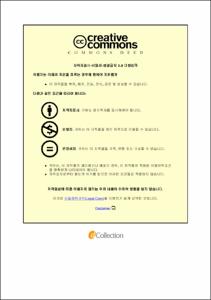고온 수직관의 하부 냉각수 주입 시 과도 비등 열전달에 대한 실험적 연구
- Abstract
- In order to prevent the core meltdown and hydrogen explosion in LOCA (Loss of Coolant Accident), the thermal hydraulic phenomenon on the cooling of high temperature nuclear fuel rods using the coolant flow injected by ECCS (Emergency Core Cooling System) is one of the important research subjects in the fields of nuclear engineering. In the present experimental study, the transient boiling heat transfer during quenching (i.e., minimum film boiling temperature, quench temperature, apparent rewetting temperature, reaching time to these temperatures, and quench front velocity) was investigated using the vertical tubes considering the actual nuclear fuel rod conditions. Two kinds of vertical test specimens were prepared. One is for the quenching experiments through the outer channel constructed using two tubes (i.e., inconel tube and quartz cylinder), and the other is for them through the inner channel using the single tubes of different materials. Through a series of quenching experiments using the outer channel flow in two vertical tubes (under the initial surface temperatures of 400°C and 700°C, liquid subcoolings of 10°C, 50°C, and 75°C, and liquid injection velocities of 0.05m/s, 0.1m/s, and 0.15m/s), the effects of the initial surface temperature, liquid subcooling, and liquid injection velocity on the transient boiling heat transfer characteristics were examined. On the other hand, through a variety of quenching experiments using the inner channel flow in the single vertical tube (under the initial surface temperature of 600°C, liquid subcoolings of 20°C, 50°C, and 70°C, and liquid injection velocities of 0.07m/s, 0.12m/s, and 0.17m/s), the influences of liquid subcooling, liquid injection velocity, and tube materials (i.e., inconel, stainless steel, and zircaloy) on them were investigated.
In the quenching experiments using the outer channel flow in two vertical tubes, the increases in the initial surface temperature and liquid subcooling resulted in increasing the minimum film boiling temperature, quench temperature, and apparent rewetting temperature. However, the effect of liquid injection velocity on them seemed to be relatively minor. On the other hand, with increasing the initial surface temperature and decreasing the liquid subcooling and liquid injection velocity, the reaching time to these temperatures and the quench front velocity became to be longer and slower, respectively. In the quenching experiments using the inner channel flow in the single vertical tube, the general trends on the effects of liquid subcooling and liquid injection velocity on minimum film boiling temperature, quench temperature, apparent rewetting temperature, and quench front velocity seemed to be similar to those using the outer channel flow in two vertical tubes. For the influences of tube materials, zircaloy exhibited higher minimum film boiling temperature, quench temperature, and apparent rewetting temperature and faster quench front velocity than inconel and stainless steel.
- Issued Date
- 2020
- Awarded Date
- 2020. 8
- Type
- Dissertation
- Publisher
- 부경대학교
- Affiliation
- 부경대학교 대학원
- Department
- 대학원 소방공학과
- Advisor
- 이치영
- Table Of Contents
- 제 1 장 서 론 1
1.1 연구 배경 1
1.2 고온 수직관에서의 과도 비등 열전달 9
1.3 기존 연구 동향 16
1.3.1 과도 비등 열전달에 영향을 미치는 인자 16
1.3.2 최소막비등온도, 급랭 온도, 겉보기 재수착 온도 20
1.3.3 급랭 전선 속도 34
1.4 연구 목표 및 내용 37
제 2 장 실험 장치 및 방법 39
2.1 실험 장치 39
2.1.1 수직관 외측 냉각 과도 비등 열전달 실험 장치 39
2.1.2 수직관 내측 냉각 과도 비등 열전달 실험 장치 52
2.2 실험 방법 58
제 3 장 실험 결과 및 고찰 62
3.1 수직관 외측 냉각 과도 비등 열전달 실험 62
3.1.1 시간에 따른 온도 변화 62
3.1.2 최소막비등온도, 급랭 온도, 겉보기 재수착 온도 71
3.1.3 가시화 결과 92
3.1.4 급랭 전선 속도 95
3.2 수직관 내측 냉각 과도 비등 열전달 실험 101
3.2.1 시간에 따른 온도 변화 101
3.2.2 최소막비등온도, 급랭 온도, 겉보기 재수착 온도 104
3.2.3 급랭 전선 속도 109
제 4 장 결 론 113
References 116
- Degree
- Master
- Files in This Item:
-
-
Download
 고온 수직관의 하부 냉각수 주입 시 과도 비등 열전달에 대한 실험적 연구.pdf
기타 데이터 / 17.83 MB / Adobe PDF
고온 수직관의 하부 냉각수 주입 시 과도 비등 열전달에 대한 실험적 연구.pdf
기타 데이터 / 17.83 MB / Adobe PDF
-
Items in Repository are protected by copyright, with all rights reserved, unless otherwise indicated.